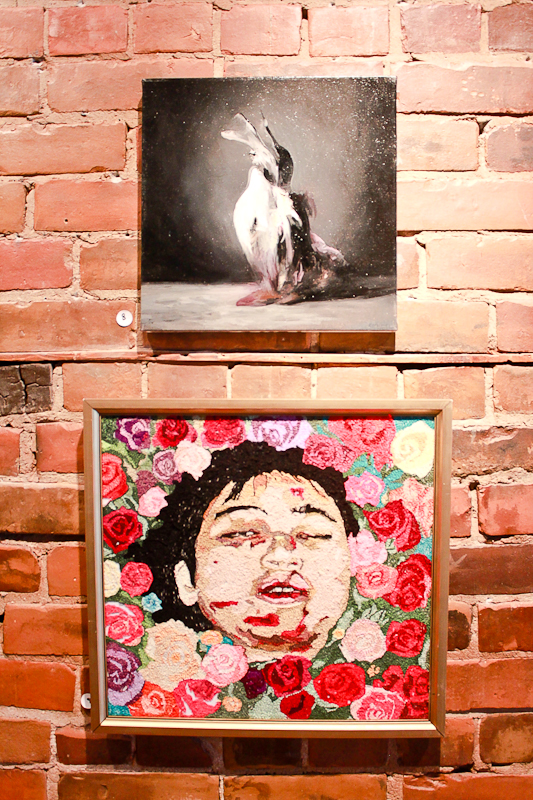Post Mortem is an international group exhibition co-curated by the owner of La Petite Mort Gallery, Guy Bérubé, and the author of Yessr Magazine, Felipe Bracelis, from Santiago, Chile.
Post Mortem is on display from Sept. 6–29 at La Petite Mort Gallery. The same exhibit will also be on display between Nov. 1–30 at La Perrera in Santiago, Chile.
“This show is a travelling show,” Bracelis said.
The exhibition encompasses mixed media, paintings, photographs, live performance, and embroidered canvas.
”I want to keep myself active,” Bérubé said. “I want to be excited when I walk to work that’s number one. People have to look at art in ways that make you react . . . I encourage a person to feel something. That’s what it is all about.”
And it was a busy exhibition. Half of the artists exhibiting their works were from Chile while the other half were from Canada and different international backgrounds. Diversity was important for the exhibition, Bracelis said.
“I am very much part of the Latin American artists medium,” said Bracelis. “I’ve had the chance to work with them in the past as co-artists or as co-organizers . . . In our natural environment you can make many categories like an uptown artist, downtown artist, underground artist, upper class artist. So to me it was very important to choose the most professional of these different segments of society. Bring them together through art and break from these categories that happen in a local context.”
The exhibition asked the viewer to look at the idea of life in a new way—in the light rather than in the darkness of culturally and socially produced conceptions.
Gallery assistant Adam Barbu said the exhibition finds similarities in cultures through the theme of death.
“The whole point of this is . . . we’re all going to die, but at the same time it’s about how we look at artists from Chile or how we look at artists from the other parts of the global artistic community and how we relate to their experience,” Barbu said.
“It’s these ideas of the symbols, the icons, the visualizations and how they manifest in the contemporary moment across cultures.”
Bracelis said the exhibition also turns away from the typical view of death—that it’s an ending.
“We wanted them to see the idea of death or passing out sort of as the beginning of something new,” he said.






